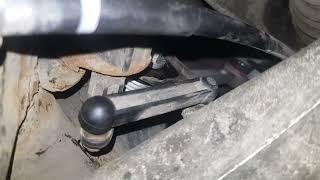
16 bit vs. 24 bit Audio, What Should You Record At? (FAQ Series)
Комментарии:

Everything you need to know for audio playback and production...
TLDR: 16 bits is enough for playback, and 24 bits is only helpful for production.
Small correction: Bit-depth doesn't really get you "resolution".
1) Frequency gives you resolution for audio.
As far as frequency goes, 44-48kHz is enough because human hearing doesn't really go beyond 20-20k, and 44.1 gives you up to 22kHz accurately according to the Nyquist formula.
44.1kHz is the CD audio standard.
48kHz is DVD audio standard.
2) Bit depth gives you dynamic range.
6dB of dynamic range per bit.
This means 16-bit has 96dB DR and can easily cover from 20dB (silent room) to 116dB (front row at a rock concert, almost hearing damage).
24-bit has 144dB DR and can cover the range between a silent room and a jet engine.
3) Higher bit-depth lowers the effect of noise while mixing audio.
When you process audio, every operation adds a little bit of noise.
With 16-bit, you have 65k steps.
With 24-bit, you have 16M steps.
A random error shift of 10-100 steps will be ever-so-slightly more significant if you have less steps to scale it.
The absolute range means you have more room for error.

Complete wrong explanation. 24 bit / 48 kHz = 24 measuring points at a frequency rate of 48 kHz. You say something complete different and wrong.
Ответить
Ive heard a lot of people try to make bit depth only about SNR, but I think youre right that it also does impact accuracy/audio quality
Ответить
Thanks for making it Black and White.
......THUMBS UP

Discord link expired
Ответить
Anyone can clarify me about standalone hardrive multitrackers?
I have a 16 track MRS-1608 hardrive from the mid 2000s. Through the manual in the specs it says 24 bit recording, 24 bit dac, 24 bit etc...on everything. It seems like everything is 24 bits internal, but on the "export" side of the mastering , through the main outs, usb out and CD burner, it's converted to 16 bits before it leaves the unit.
Am i suffering a lost of resolution compared to 24 or 32 bit new Tascam models?
I mean am i missing something if the final results are burned onto a traditional 16 bit wave CD to listen in my living room sound system?

what about 1 bit audio
Ответить
4 bit audio is the best lmfaooo😂
Ответить
Honestly don't think the "increase in quality" is worth the space 24/32 bit takes up
Ответить
i will buy mcdonald’s and make the drive thru have 24 bit 192khz audio
Ответить
very good video, but i think it also contains revisionised misconceptions - for example, the digital audio signal is not a line, but many dots.
If you convert digital 44.1kHz signal back to analog, the analog waveform is round again.
i learned that the digital "stairs" are not an accurate way to VISUALIZE the digital data.
but they are more practical for Editing in the DAW.
humans are only able to hear until ~20khz. the sample rate must be only at least 40khz to work. Or is this concept wrong? trying to figure it out, not an expert....

WOW man tnx Im going to 4 bit no doubt after this! I didn't know I had a hidden HD audio feature in my PC. TNX
Ответить
Very respectfully, I must disagree with this video. Bit depth has nothing to do with "how much information is captured" and cannot be compared with photo resolution. Bit depth has very little practical impact on sound quality, since our perception of sound is basically just about the speed and direction the air molecules are moving. High bit depth may record tiny variations in speed, but that's not something humans can hear or care about. Nor can anyone hear (or care about) whether Instrument A is 64 times louder than Instrument B, or 65 times. (The difference between 5 and 6 bit.)
Low bit depth does not introduce "digital artifacts", only noise. The reason your 4-bit example sounded so bad is probably because it was processed too quiet. Bear in mind that cassette and vinyl are only 6-bit and they sound great to most people.
Finally, showing a digital waveform as a jagged, pixellated line is highly misleading, because, just like analog waveforms, digital waveforms are ALSO continuous and smooth. A sine wave can be digitally recorded perfectly with just 2 samples, one at each peak, with the resulting audio being a perfect, smooth sine wave.

Very good video and I record classical music in 24 bit and in low frequencies you can hear the difference. It´s very very small difference and it happen in some little points of the music, but exist. With attention on the bass, like me, hehehe... you can "feel" the difference of 16 bit to 24 bit. In classical music and some wen age musics, 24 bit is better. Congratulation for your video.
Ответить
I've noticed that for me it's better to use 44.1k instead of 48 or 96 for singing because anything more includes a lot of details that I don't need in the recording. 16 bit was a bit too loud compared to 24 bit. I don't know if that's just me but it seemed to be louder and more "abrupt" between high and low volumes
Ответить
Thanks for the info I can understand what you're getting across its like there's a way in but not all ways in the front door.
Ответить
You explain very well and quickly I love and appreciate that a lot
Ответить
👍Ciao, grazie per il video. ITALY
Ответить
OK but 4 bit sounds fucking sick lmfaoooo i love that sound it scratches my brain good
Ответить
All clear now. Many thanks! 👍☺
Ответить
Great stuff! I learnt something.. glad I subscribed!
Ответить
Crap I wished I knew before I've been posting my songs off Garage Band 🤦♀🤦♀🤦♀🤦♀🤦♀🤦♀🤦♀🤦♀🤦♀🤦♀🤦♀ the 24 bit settings was hidden in advanced settings. Why isn't it offered in the default menu I have no freakin idea. But thank you so much, I will now be taking down the latest recordings and posting in 24 bit tonight 😂😂😂
Ответить
Great explanation! Thank you
Ответить
Here's a very important rule: Shit in = Shit out. Record in 24 bit. End of.
Ответить
I no see defrent between 32 or 16 bit. But the simbolrate is have big difrent that men 44.1khz have big defrent with 48khz or above.
Ответить
I work with Voice Over artists, and when they record at 16dB with low gain I get tons of background noise, it is a gamble recording at 16bit, you would need to have a stable good gain.... or just record at 24bit, which is what I ask people to do.
Ответить
Best video 🛸
Ответить
You practically said nothing, din't answer the question at all, just created more doubt, but that was great anyway, thank you!
Ответить
Amazing video! Explanation was so brilliantly simple that I understood with ease :)
Ответить
Consider microphone self noise, noise of the actual preamp, ADC-DAC interface and rest of electronics and pure 16 bit with noise shapping and oversampling does a very job. 24bit electronics should have better linearity in lowest bits, better signal to noise and dynamics, lower intermodulation distortions, bla, bla, if everything is recorded correctly. However in times of Loudness War and compression it's all very much meaningless, because in the end the peaks of the waveforms will be clipped by some wise ass running the DAW, and we end up with 10-12 bit of dynamics anyway.
Ответить
This is not very scientific nor accurate
Ответить
Higher bit depth means greater precision in mapping an analogue voltage to a corresponding digital value, and allows for a greater signal to noise ratio.
16 bit (2 bytes) means you have 65,536 possible digital values available for representing the analogue voltage.
24 bit (3 bytes) means you have 16,777,216 possible digital values for representing the analogue voltage.
So, 24 bit can more precisely record what the analogue voltage was.
It's important to know that the digital values are evenly spread out between maximum voltage and minimum voltage.
This is important when you're dealing with very low voltage levels - there are fewer digital values between zero and the value closest to the one that represents the voltage if you're using a lower bit depth. That means any editing of the resulting digital audio has fewer values to change between. So it's always better to capture in the highest bit depth possible, and do any processing at an even higher bit depth, before mastering down to the bit depth needed for the final product.
16 bit allows for a maximum signal to noise ratio of 96dB, and 24 bit allows for up to 144 dB s/n ratio.
Very few audio music recordings are made that have a dynamic range that cannot easily be accommodated within a 96dB noise floor, and almost no commercial music recordings have that sort of dynamic range.
Quantization is the process of mapping the voltage to a specific digital value. Dithering is a way of doing the quantization that reduces digital artefacts caused by quantization.
Bit Depth is about digital accuracy of the sampled analogue signal. Sample rate affects maximum frequency that can be digitally represented. Sample rate is a different matter that has it's own considerations that need to be understood.

Great, video, thanks. So, are there tools that can help identify what the signals are? I.E. I know with Photoshop; I can identify whether an image is 1080 or 4k or tru 4k. Are there such tools for audio sources and files?
Ответить
14 bit sounds really good and more analogue like for some unknown reason; 48 bit sounds clearer and sharper but the higher the bit rate, the more of the soul of the music is removed (not sure why, but this is my experience working in professional audio since 1988).
Ответить
Wondering if there would still be benefits of recording at 16 bits instead of 24bits.
Seems to me that 16 bits would be better for multitracking instruments since all DAWs have latency. I would think that someone with a lower end PC would benefit from 16 bits since there would be less data to process in the total roundrip therefore reducing latency.

Thank you sir
Ответить
Good shit!
Ответить
Which is the ideal parameters to record electric guitar with distortion effect?
Ответить
i think 24 bit should be made normal and cd quality. 16 bit sounds very bad through headphones or earphones. 32 bit is actually not necessary because human ears hardly notice anything different. at 24 bit i actually get better sound stage and can hear every minute frequencies. but 16 bit sounds very flat and sounds very garbage
Ответить
I can hear the difference between 16/24 bit its not much but its enough to annoy my ears.
Ответить
Hi there!How many sound engineering years you have !?are you taken any school?i want to ask you also about rebouncing or re-recording on media or simple analog looping with purpose or 16-32 bit conversion !Did yoiu try it ?Did you get notable difference ?What actually could meens a technique like that ?
Ответить
Only vid that made any sense about the matter
THANK YOU 🤝

Captions on 4 bit is fun....[Music] ^^
Ответить
Wow!!! So helpful thank you :D
Ответить
Someone was claiming that there was no difference between 16-bit and 24-bit in a article I read and they also included the quantization numbers? Thank you for the explanation.
Ответить

























